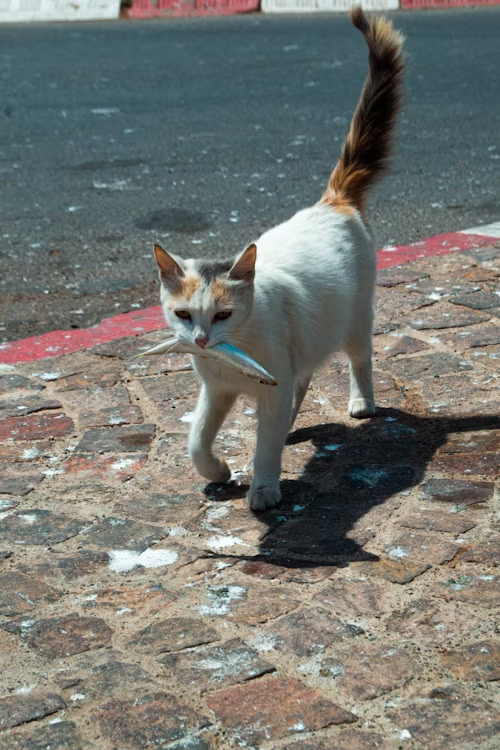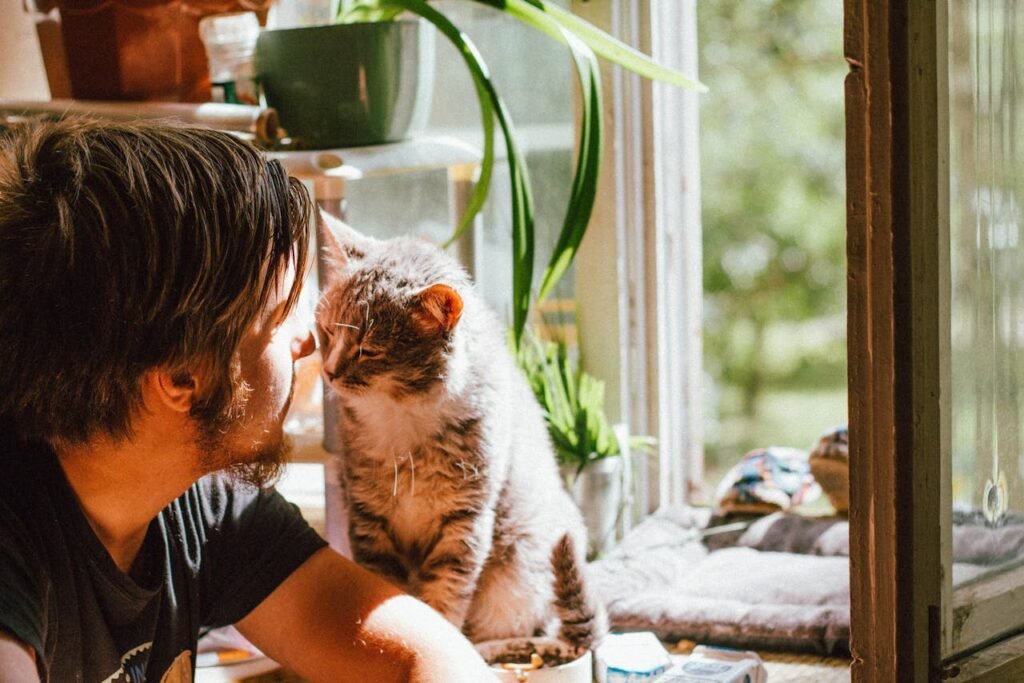As Australians become more conscious of their environmental impact, pet ownership is another area where we can make sustainable choices. Cats bring us joy, but caring for them can have significant ecological consequences. From the type of cat food, we buy to managing waste, there are simple yet effective ways to reduce your environmental footprint as a cat owner. In this guide, we’ll explore practical tips to help you become an eco-friendlier cat owner, all while keeping your feline happy and healthy.
1. Choose Eco-Friendly Cat Food

Feeding your cat in an environmentally conscious way is one of the biggest areas where you can make an impact. While cats are obligate carnivores, there are sustainable ways to feed them:
- Sustainably Sourced Ingredients: Look for cat food brands that use responsibly sourced or certified fish and meat. In Australia, brands like Open Paddock Pet Foods source their ingredients locally and follow ethical farming practices. By-products in these foods reduce waste by using all parts of the animal.
- Buy in Bulk: Purchasing cat food in bulk reduces packaging waste and can lower the carbon footprint associated with multiple shipments.
For adventurous owners, homemade cat food using organic or locally sourced ingredients can also be an eco-friendly option. However, ensure it meets your cat’s nutritional needs, as their diets require careful balance.
Case Study: A Sydney-based cat owner named Emma switched to a locally sourced, by-product-based pet food brand. Not only did it cut down on packaging, but Emma also noticed her cat’s digestion improved. She shared how buying in bulk saved money and reduced waste over time.
2. Switch to Biodegradable Cat Litter
Traditional clay-based cat litter is harmful to the environment due to strip mining and its contribution to landfill waste. Switching to biodegradable options not only benefits the planet but also improves your cat’s health. Some popular eco-friendly cat litters include:
- Recycled Paper Litter: Soft, low dust, and easy to dispose of in compost. Several Australian brands offer paper-based litter made from recycled materials.
- Plant-Based Litters: Made from corn, wood, or tofu, these biodegradable options are effective and sustainable alternatives to conventional clay.
When choosing a litter, experiment with different types to find what suits your cat best. Be sure to dispose of the litter in an eco-friendly manner, such as using compostable litter bags.
3. Responsible Cat Ownership: Adoption and Population Control

Spaying or neutering your cat is not only responsible in terms of population control, but it also contributes to sustainability. Uncontrolled breeding leads to overpopulation, which puts a strain on shelters and resources. By spaying or neutering your cat, you prevent unwanted kittens and reduce the strain on animal welfare systems in Australia.
Adopting cats from shelters not only gives animals a second chance at life but also helps reduce the environmental burden of overpopulation. Each year, thousands of stray cats contribute to environmental degradation, especially in fragile ecosystems like Australia’s. By adopting, you’re directly helping to lower the number of cats on the streets and supporting shelters that provide essential care to homeless animals.
Additionally, managing your cat’s waste sustainably is crucial. Plastic litter bags and non-biodegradable litter often end up in landfills. Here’s how you can reduce waste:
- Compostable Litter Bags: Use biodegradable bags for cleaning out the litter box.
- Composting Cat Waste: For those using biodegradable litter, composting is a great way to minimize waste. Avoid using composted cat waste in vegetable gardens due to potential pathogens.
Case Study: In Brisbane, a shelter implemented a large-scale spay-and-neuter program alongside waste management strategies. The shelter reported fewer stray cats, less strain on their resources, and a notable reduction in waste disposal costs after switching to biodegradable litter options.
4. Support Local and Ethical Brands
Supporting local brands that prioritize sustainability can make a big impact. Many Australian companies are committed to eco-conscious practices, using renewable resources or recycled materials for their products. Whether it’s food, toys, or litter, choosing local brands reduces transportation emissions and supports the local economy.
For example, eco-friendly brands like Rufus & Coco offer biodegradable litter, sustainable toys, and grooming products that align with sustainable living values.
5. Keep Cats Indoors to Protect Wildlife

Australia’s unique wildlife is particularly vulnerable to outdoor cats, which have devastating impacts on local bird and small mammal populations. In fact, a recent study estimates that feral and domestic cats kill more than 1.5 billion native animals across Australia each year. This includes small mammals, reptiles, and birds—many of which are already threatened or endangered.
Keeping your cat indoors is one of the most eco-friendly decisions you can make. If your cat enjoys the outdoors, consider:
- Building a Catio: A secure outdoor enclosure allows your cat to experience the outdoors safely while protecting wildlife. Catios are gaining popularity in Australia as they combine freedom with environmental responsibility.
- Leash Training: Walking your cat on a leash lets them explore under supervision, reducing the risk to native species while keeping your cat safe.
Example: The City of Canberra has embraced initiatives to encourage residents to keep cats indoors or in cat enclosures to protect local wildlife. A local study found a significant decrease in bird predation in areas where cat containment laws were enforced.
6. Eco-Friendly Cat Care Products and Grooming
From automatic feeders to litter boxes, some cat care products consume energy. Choosing energy-efficient products, such as LED night lights or automatic feeders with energy-saving modes, can help reduce your cat’s carbon pawprint. Additionally, relying on natural lighting and ventilation in your home instead of climate control can also minimize energy consumption.
Alongside energy efficiency, investing in high-quality, long-lasting items such as scratching posts, beds, and toys made from sustainable materials like bamboo, hemp, or organic cotton can help minimize waste. Products that are durable and built to last reduce the need for frequent replacements, cutting down on the overall environmental impact.
Grooming products can also contribute to sustainability. Opt for shampoos, conditioners, and grooming wipes made from natural, non-toxic ingredients. Brands like Fuzzyard, based in Australia, offer grooming products free from harmful chemicals that are gentle on your cat’s skin and coat.
For flea control, many eco-conscious owners turn to natural flea remedies like diatomaceous earth or essential oil-based sprays. These options reduce exposure to harsh chemicals while effectively keeping fleas at bay.
7. Donate or Recycle Cat Supplies

If your cat outgrows toys, beds, or other gear, consider donating them to local shelters or recycling them if possible. Many Australian shelters are always in need of supplies, and recycling helps reduce waste. Recycling centers and some local businesses may accept donations of gently used items to minimize environmental impact.
Case Study: A Melbourne-based cat rescue reported an increase in donations of used cat gear, which helped them avoid purchasing new items while cutting down on waste. Local cat owners shared that donating old items not only reduced clutter but also gave them a sense of community involvement.
Conclusion
Sustainable cat ownership in Australia is easier than you think. By making small changes—such as switching to eco-friendly products, supporting local and ethical brands, and protecting native wildlife—you can significantly reduce your environmental impact while ensuring your cat remains happy and healthy. These practices, when adopted by more pet owners, can have a lasting, positive effect on the planet.
